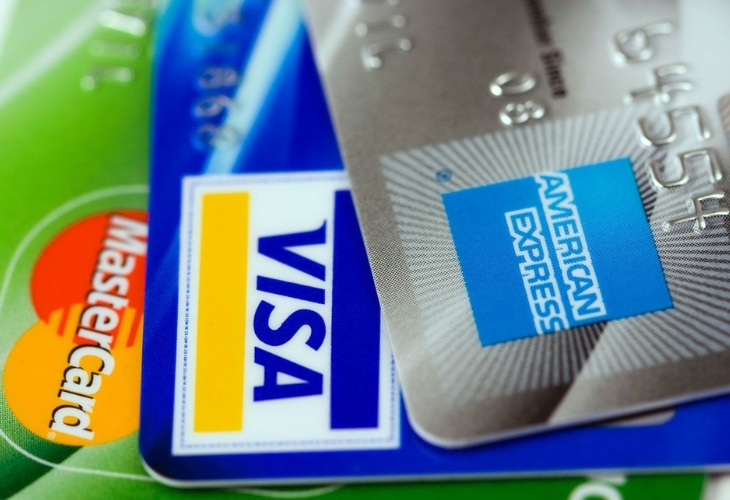International Service Charge on Bank Statement
Have you ever noticed an international service charge on your bank statement and wondered what it was? You’re not alone. Many people are often surprised by these fees.
International service charges are fees that banks levy for transactions involving foreign currencies or overseas financial institutions. They can appear on your bank statement in a few situations. This occurs when you use your debit or credit card abroad. It can also happen when you shop online from international vendors.

Understanding these charges can be a bit complex. They involve various factors such as currency conversion rates, network provider fees, and the policies of your own bank.
This article aims to demystify the concept of international service charges. We’ll explore what triggers these fees, how they’re calculated, and how to spot them on your bank statement.
We’ll also provide tips on how to avoid or minimize these charges. So, whether you’re a frequent traveler, an online shopper, or just curious, this guide is for you.
Understanding International Service Charges
An international service charge is a fee applied for handling foreign transactions. This can include both purchases made abroad and those made online with international merchants. Many consumers are unaware of these charges until they see their bank statements.
Not all banks have the same fees. Some may charge a percentage of the transaction or a flat fee for international services. Understanding your bank’s specific policies is crucial.
These fees often combine several elements. Common components include currency conversion fees, network provider charges, and any additional surcharges from the foreign bank. It’s essential to recognize how each part contributes to the total cost.
Factors influencing these fees can vary. Some banks have higher fees based on currency movements, while others maintain standard rates regardless of the circumstances.
Here’s a quick list of what might contribute to the costs:
- Currency conversion rates
- Network provider charges
- Foreign bank fees
- Domestic bank policies
Understanding these fees equips you to make informed financial decisions. It can also help you better manage your finances while traveling or making online purchases.
What Triggers an International Service Charge?
International service charges are often triggered by transactions processed outside your country. This can involve purchases made while traveling or buying goods from international online retailers.
Using an ATM in a foreign country is another common scenario. In such cases, the ATM’s bank and your bank may both impose fees. This double charge can significantly increase costs.
Moreover, subscription services or apps paid in foreign currency can also incur these charges. Even if you are home, paying in a foreign currency might lead to fees.
Shopping from vendors who process payments through foreign banks is another trigger. Knowing which retailers may subject you to international fees is beneficial.
Understanding the scenarios that lead to international charges can help you take steps to avoid or reduce them.
Debit Card vs. Credit Card: Is There a Difference?
Debit and credit cards may seem similar, but they can lead to different international service fees. The difference often lies in how fees are calculated and applied by the bank.
Credit cards tend to have higher international service charges. This is due to additional features like added security and rewards programs, which can lead to increased fees.
Debit card fees are usually lower but can vary based on your bank’s policies. They may involve fewer protections compared to credit cards but might have more cost-effective terms.
Both card types apply fees for currency conversion. However, currency conversion rates can differ based on the card issuer’s agreements with network providers like Visa or Mastercard.
Understanding these differences helps you choose the best card for foreign transactions. It also enables you to manage costs effectively, whether traveling abroad or shopping online internationally.

How Are International Service Charges Calculated?
The calculation of international service charges is a multi-step process. It incorporates various factors, each contributing to the overall fee structure that you see on your statement.
The first component is the currency conversion fee. This fee is applied when your transaction requires converting from one currency to another. The conversion rate might not always be favorable, adding extra costs to your purchase.
Next, there’s the role of network providers. These are companies like Visa or Mastercard that manage the payment process. They often impose a small percentage fee for their services, which forms part of the international service charge.
Additional bank-specific policies may also affect the fee. Some banks add a fixed surcharge or a variable fee that can differ based on transaction size or location.
Here’s a breakdown of the typical components:
- Currency conversion fees
- Network provider charges (e.g., Visa, Mastercard)
- Additional bank-imposed surcharges
- Transaction location and type considerations
Understanding these elements helps you decipher your bank statement. It also assists in making cost-effective decisions when dealing with foreign transactions.
The Role of Currency Conversion
Currency conversion plays a vital role in international service charges. Whenever a transaction occurs in a foreign currency, a conversion is necessary. This process is not just about changing one currency to another; it involves added costs.
The costs arise because banks and payment processors apply a margin over the wholesale currency rate. This margin can be a small percentage but adds up quickly for larger transactions.
Conversion rates can vary daily, affecting the cost of foreign transactions. These rate fluctuations can result in higher fees at times when currency markets are unstable.
Understanding how currency conversion works helps in planning your foreign transactions. You might find that timing your purchases to coincide with favorable exchange rates can save you money.
Network Providers and Their Fees
Network providers like Visa and Mastercard play a significant part in processing international transactions. They serve as a connection between your bank and the foreign merchant’s bank. For this service, they apply their own fees.
These fees are generally a small percentage of the transaction value. They can vary based on your bank’s agreement with the network provider and the currency used.
Network provider fees are standardized, but your bank might add additional charges. This dual-layer of fees can increase the total cost of an international transaction.
By understanding the role of network providers, you can better anticipate these charges. This knowledge empowers you to choose cards with more favorable terms for international use, potentially reducing your overall costs.
Spotting International Service Charges on Your Statement
Spotting international service charges on your bank statement can seem daunting. These fees are usually embedded within the transaction details, often in small print. Knowing what to look for can make a big difference.
The fee might appear as a separate line item or embedded in the total transaction amount. It depends on your bank’s way of presenting these charges. Understanding yourself with these details helps in better recognizing them.
Here’s what to check on your statement:
- Look for a specific entry labeled as “International Service Fee.”
- Find mentions of currency conversion charges.
- Identify any un expected high transactional amounts.
Being vigilant in reviewing your bank statement ensures you notice every charge. This practice aids in spotting unauthorized or unexpected fees.
Identifying Different Types of Fees
Different types of fees can appear on your bank statement related to international transactions. These fees can sometimes be puzzling if you’re not aware of their nature.
One common fee is the foreign transaction fee. This fee covers the cost of processing payments made in another currency. Some banks charge a network assessment fee, which covers the processing networks like Visa or Mastercard.
Additionally, if you use an ATM abroad, you might encounter ATM service charges. These are fees for converting currency and accessing cash in a foreign country.
Understanding these fee types empowers you to identify them on your statement. This clarity ensures you aren’t caught off guard by the costs associated with international transactions. Being aware of these fees allows you to take proactive steps to manage or even minimize them.
Avoiding or Minimising International Service Fees
Avoiding international service fees can be tricky, but not impossible. Knowing your options helps mitigate these extra costs. With a few proactive steps, you can enjoy international purchases without breaking the bank.
First, consider bank accounts designed for travelers. These accounts typically offer lower or waived international fees. Second, compare different banks’ fee structures to find a plan that suits your spending habits.
Here’s how you can minimize these fees:
- Use cards that waive foreign transaction fees.
- Opt for local currency options when making purchases.
- Utilize mobile payment apps that offer favorable exchange rates.
- Withdraw cash in bulk from foreign ATMs to reduce fees per transaction.
Notifying your bank before traveling can prevent additional fees due to blocked transactions. Understanding your bank’s fee policies is crucial before any international trip or online shopping spree.
Banks may also provide refunds or fee reductions, but you have to ask. Negotiating with your bank might yield savings you didn’t expect. Always keep an eye on any updates to fee policies, as banks adjust these over time.

Tips for Travelers and Online Shoppers
Travelers and online shoppers face challenges with international service fees. Planning ahead can lead to significant savings. A few adjustments to your spending habits can ease this burden.
First, always select the local currency option at checkout. This reduces the chance of hidden conversion fees. Additionally, using a no-fee credit card can save you from unwanted charges.
Another tip is to use prepaid travel cards for international expenses. These cards allow you to load specific currencies, helping manage conversion costs. Planning and awareness are key to minimizing extra charges.
Lastly, consider shopping on websites that offer domestic payment options. Some international stores partner with local payment providers to lower service fees. By doing so, you can bypass foreign transaction fees and get more value for your money.
What is the International Service Fee on a Debit Card?
The international service fee on a debit card can vary based on the bank or issuer. Typically, these fees range from 1% to 3% of the transaction amount. Some banks may charge a flat fee for international transactions, while others may add a percentage-based fee.
The fee is usually charged when you make purchases or withdraw cash in a foreign currency. It’s important to check with your bank to understand the exact fees. Some banks offer cards with lower or no international service fees.
Why am I being charged an International Service Fee?
You’re being charged an international service fee because your debit card transaction involves foreign elements, such as:
- Currency Conversion: The bank or card issuer might charge a fee when you make a purchase in a foreign currency. You might also incur a fee when you withdraw cash. This fee is for converting the funds. This is because the transaction requires additional processing to convert the amount into your local currency.
- Cross-Border Transaction: Even if you’re using the same currency (like USD in the U.S. and Canada), if the transaction is processed through a foreign bank or merchant, it is considered a cross-border transaction. Financial institutions often apply a fee for handling international transactions, which is why you’re charged.
- ATM Withdrawal Abroad: Using your debit card to withdraw cash from an ATM outside your home country incurs fees. Banks typically charge an international ATM fee. They also add any foreign currency exchange fees.
Common Fees:
- Currency Conversion Fees: Typically around 1%–3% of the transaction amount.
- Foreign Transaction Fees: Generally 1%–3% of the transaction, which can be on top of the conversion fee.
- ATM Withdrawal Fees: Fees vary by bank. Generally, they range from $2 to $5 per transaction if you’re using an ATM abroad.
Frequently Asked Questions About International Service Fees
Why did I get charged an international service fee?
International service fees are applied by banks or payment processors when a transaction involves a foreign currency or an international merchant. These fees help cover the costs of currency conversion and processing international payments.
What is an international service charge?
An international service charge is a fee added to transactions processed outside your home country. Banks, credit card companies, and payment providers impose these charges to cover the costs of handling cross-border payments and currency conversions.
How do I avoid international transaction fees?
To avoid international transaction fees:
- Choose Cambridge Currencies, a provider that specializes in cross-border payments with minimal fees.
- Use a bank or payment provider that offers fee-free international transactions.
- Consider using a local currency account.
Do banks charge for international transactions?
Yes, most banks charge fees for international transactions. These may include:
- Foreign transaction fees
- Currency conversion charges
- Additional service fees, depending on the bank and transaction type.
Can you dispute a service fee?
Yes, you can dispute a service fee if it was charged incorrectly or without proper disclosure. Contact your bank or payment provider to request a review. Provide supporting documentation to strengthen your case.
Conclusion: Managing Your International Transaction Costs
Understanding international service charges equips you to handle them effectively. By understanding yourself with how these fees are triggered and calculated, you can make informed financial decisions.
Whether traveling or shopping online, small adjustments can make a big difference. Choosing fee-friendly cards and strategies can significantly lower costs. Keeping abreast of fee structures and actively managing transactions helps keep international purchases affordable and hassle-free.
